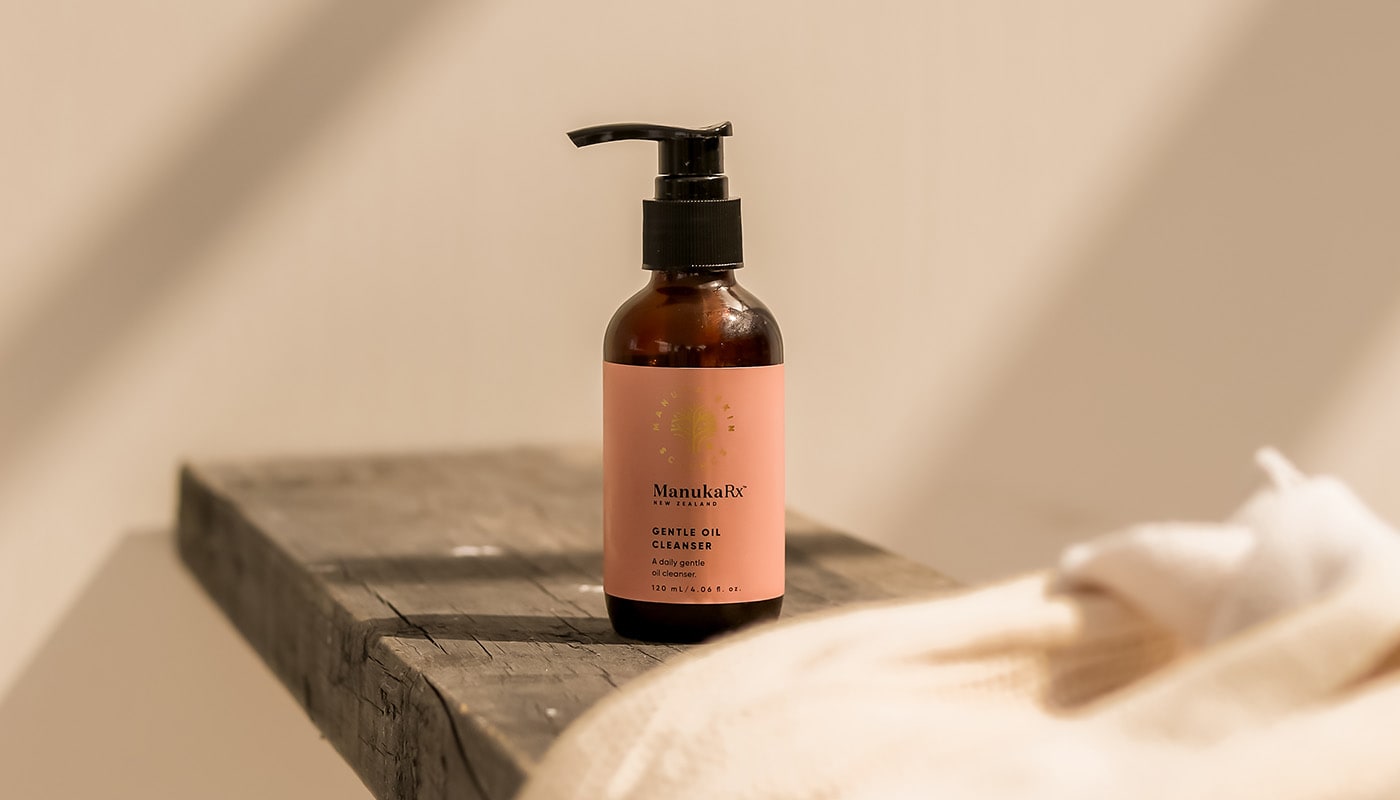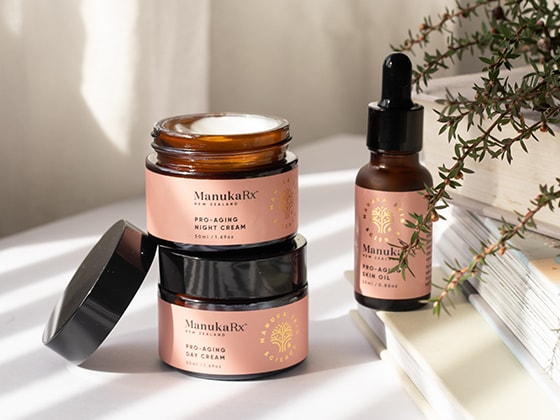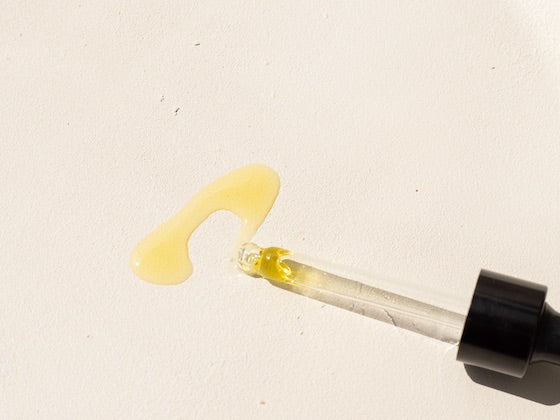It seems like every week, there's some new plant trending throughout social media, T.V. shows, and everywhere else you can imagine.
Tea tree oil, for instance, is a classic go-to solution for several ailments and uses – it's a household name for many people.
You're right to be suspicious of the differences between mānuka oil vs. tea tree oil. You want the best natural solution possible and you don't want to get ripped off.
Plus, how could anything possibly pry you away from your beloved tea tree oil?
Not a chance, right?
Let's take a hard look at these two plants and their oils. Then, you can decide for yourself which is the best choice.

Mānuka Oil and Tea Tree Oil: Everything You Need to Know About Tea Tree
Melaleuca is the scientific name for the tea tree plant. Both the plant itself and its essential oil are extremely versatile for a variety of uses. Here’s all you could possibly need to know about tea tree.
The Tea Tree Plant
Melaleuca is a plant that belongs to the myrtle family. Many people don't realise that there are over 300 different species of the tea tree plant – some are listed as endangered.
Most common varieties are endemic to Australia and a small handful of nearby Pacific islands. This means melaleuca is exclusively found in these places. By indigenous, it means that something has originated in one place yet it can be found in another, whereas endemic indicates exclusivity.
The tea tree plant grows to a wide range of sizes.
Some smaller bushes barely reach one meter in height while other trees tower over 35 meters. Some plants grow in swampy and moist areas while others have no problem thriving in barren or sandy soils.
Historical Uses of Tea Tree Oil
Aboriginal people in modern-day Australia have used melaleuca for centuries taking advantage of just about the entire plant.
The wood makes an excellent tool for crafting rafts and shelter while the "bee bread" and honey from hives make a nutritious dish. Bundjalung people in New South Wales treat skin infections with crushed melaleuca leaves and mud packs.
Benefits of Tea Tree Oil
Tea tree oil is very safe – yet effective – for many topical and household applications due to its antifungal and antibacterial properties.
How to Use Tea Tree Oil
You can use tea tree oil for several ailments or uses. This list is by no means exhaustive.
- Insect repellent
- Household cleaner
- Skin tags
- Feet and nails
- Prevention of acne
- Add to shampoo and conditioner
- Bug bites
- Sunburns and rashes
- Deodorizer
- Relief from congestion or respiratory infections
Mānuka Oil and Tea Tree Oil: Let's Look at Mānuka Oil
Mānuka is actually very similar to tea tree but differs in a few key ways.
The Mānuka Plant
Mānuka also belongs to the myrtle family but goes by the scientific name of Leptospermum Scoparium. This plant is indigenous to New Zealand. Like mānuka oil and tea tree oil sources, mānuka has different varieties which often grow in various sizes ranging from 2-5-meter shrubs to large trees of over 15 meters.
Historical Uses of Mānuka oil and tea tree oil
New Zealand's indigenous Māori population have used mānuka plants for centuries in a variety of ways both internally, externally, as well as in other practical applications. Like Aboriginal people, the Māori utilize all parts of the plant including the leaves, bark, stems, ash, flowers, and berries. But neither process the plant to extract the essential oil
It was only in the last 30 years that Europeans have introduced a steam distillation process to extract mānuka essential oil. This low-temperature technique ensures that all the potent enzymes are not damaged during extraction.
Benefits mānuka of oil and tea tree oil
Mānuka oil is filled with potent triketones, flavonoids, and other chemical compounds which give the substance powerful antibacterial properties.
It gets better.
Mānuka oil extracted from plants grown in New Zealand's East Cape region contains higher levels of triketones than oil from varieties grown elsewhere.
This makes East Cape mānuka oil one of the most powerful natural antibacterial solutions.
How to Use Mānuka Oil
Like tea tree oil, mānuka is extremely versatile and safe for frequent use both topically and in several household applications.
Thanks to its anti-inflammatory properties, mānuka plant is great for:
- Soothing sore muscles and aching joints
- Relieving congestion or respiratory distress
- Providing relief for acne, bug bites, dry itchy skin and rashes, as well as minor burns, scars, and cuts
- Reducing the appearance of or removing skin tags
Its antibacterial qualities make mānuka an ideal solution for:
- Acne, minor skin irritations, rashes, bug bites, and other skin conditions
- Feet and nails
- Relief from sunburns
- Disinfecting door handles, shoes, clothing, keyboards, phones, and other household items
- Deodorizing shoes, clothing, cars, and furniture
- Disinfecting your mouth and freshening breath as an oral rinse
- Cracked hands, feet, and cuticles
- Brightening hair, skin, and nails
Mānuka Oil and Tea Tree Oil: Understanding the Key Differences
Triketones, flavonoids, and other enzymes are what give essential oils their antimicrobial properties.
Studies show that Mānuka oil from plants in New Zealand's East Cape region contains 20 to 30 times more of these triketones and enzymes than tea tree oil – that's pretty powerful. Plus, East Cape mānuka actually contains other potent antibacterial enzymes you won't find in tea tree oil.
You could always combine a few drops of tea tree oil with your mānuka skin oil to create an antimicrobial and healing powerhouse. Because mānuka oil is synergistic, this makes it the ideal essential oil to combine with many other natural ingredients to amplify their properties. That's why East Cape mānuka oil is the key ingredient in our essential oil blends.
Or alternatively, click here to discover our range of natural skincare made with mānuka oil.







5 comments
Heather
How do you suggest using this for relieving congestion or respiratory problems. (Already use the Manuka cream for skin ailments, but not used the oil).
Thanks
Heather
How do you suggest using this for relieving congestion or respiratory problems. (Already use the Manuka cream for skin ailments, but not used the oil).
Thanks
Heather
Ngamane Stanley
How do I produce oil from our manuka tree’s on the East coast of NZ. Are there distiller’s in this area and how do I contact them? Any information would be greatly appreciated.
How do I produce oil from our manuka tree’s on the East coast of NZ. Are there distiller’s in this area and how do I contact them? Any information would be greatly appreciated.
Chris Walters
Thank you very much for this information. I’m in Australia and I’ve not seen Manuka Oil in shops for sale.
Thank you very much for this information. I’m in Australia and I’ve not seen Manuka Oil in shops for sale.
Victoria
Where can I get manuka oil in Oz
Where can I get manuka oil in Oz
Eddy
Hi can I purchase Manuka oil in Australia.
Hi can I purchase Manuka oil in Australia.